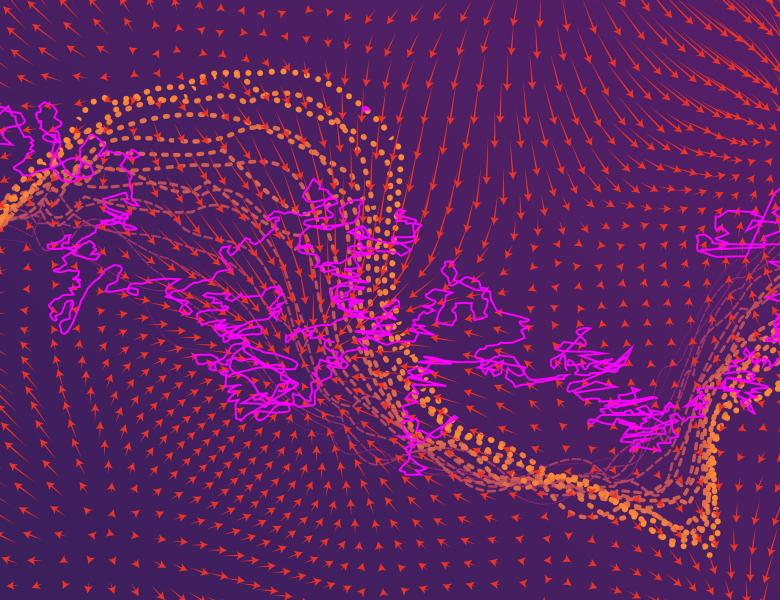
Abstract
Stochastic flows of an advective-diffusive nature are ubiquitous in biology and the physical sciences. Of particular interest is the problem to reconcile observed marginal distributions with a given prior posed by E. Schroedinger in 1932/32 and known as the Schroedinger Bridge Problem (SBP). It turns out that Schroedinger’s problem can be viewed as a problem in large deviations, a modeling problem, as well as a control problem. Due to the fundamental significance of this problem, interest in SBP and in its deterministic (zero-noise limit) counterpart of Optimal Mass Transport (OMT) has in recent years enticed a broad spectrum of disciplines, including physics, stochastic control, computer science, probability theory, and geometry. Yet, while the mathematics and applications of SBP/OMT have been developing at a considerable pace, accounting for marginals of unequal mass has received scant attention; the problem to interpolate between “unbalanced” marginals has been approached by introducing source/sink terms into the transport equations, in an adhoc manner, chiefly driven by applications in image registration. Nevertheless, losses are inherent in many physical processes and, thereby, models that account for lossy transport may also need to be reconciled with observed marginals following Schroedinger’s dictum; that is, to adjust the probabilty of trajectories of particles, including those that do not make it to the terminal observation point, so that the updated law represents the most likely way that particles may have been transported, or vanished, at some intermediate point. Thus, the purpose of this talk is to present recent results on stochastic evolutions with losses, whereupon particles are “killed” (jump into a coffin/extinction state) according to a probabilistic law, and thereby mass is gradually lost along their stochastically driven flow. Through a suitable embedding we turn the problem into an SBP for stochastic processes that combine diffusive and jump characteristics. Then, following a large-deviations formalism in the style of E. Schroedinger, given a prior law that allows for losses, we explore the most probable evolution of particles along with the most likely killing rate as the particles transition between the specified marginals. Our approach differs sharply from previous work involving a Feynman-Kac multiplicative reweighing of the reference measure which, as we argue, is far from Schroedinger’s quest. We develop a suitable Schroedinger system of coupled PDEs' for this problem, an iterative Fortet-IPF-Sinkhorn algorithm for computations, and finally formulate and solve a related fluid-dynamic control problem for the flow of one-time marginals where both the drift and the new killing rate play the role of control variables.
Joint work with Yongxin Chen and Michele Pavon.


